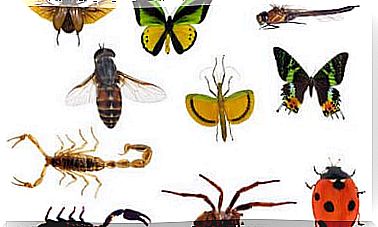8 Myths About Pets To Dispel

As in almost everything, even in the animal world there are myths and truths. There are, in fact, a large number of legends and myths about pets that are still considered true by many today. In My Animals we dispel some myths about animals based on scientific and real evidence.
8 myths about pets
Having puppies prevents female cancer
It is one of the many myths about animals that, moreover, can be dangerous for their health. Having a litter at least once in a lifetime does not prevent cancer or infections of the uterus in females.
This statement is completely false, a real invention. Conversely, sterilization is the only way of prevention. Heat avoidance pills are not a safe method either.

With each heat, females are at increased risk of developing breast or ovarian cancer. Likewise, the chances of suffering from pyometra or inflammation of the uterus increase. It is very common, in fact, that older females who have not been spayed suffer from this condition.
Dogs see in black and white
In the retina there are cells specialized in capturing light: the cones and rods. Cones perceive details and chromatic vision. The rods take care of different light intensities, night vision and detect movement.
Dogs have fewer and fewer cones than humans. This means that they distinguish fewer colors, but even so they perceive some such as blue and yellow and some shades of the same.

They see less detail than we do, they have less focusing ability and their chromatic vision is more reduced, but they perceive movement very well.
They also enjoy greater visual acuity in the dark than humans, which is ideal for detecting moving prey.
Cats always fall on their feet
Cats have an innate reflex called the righting reflex that allows them to turn around in the air and position themselves to land on their paws.
However, this is not always feasible. Depending on the height, in fact, they may not have enough time, consequently they fall on the body.

Myths about animals: one year of human life corresponds to seven years for dogs
Dogs have a shorter life expectancy than humans, but multiplying a human year by seven will not give us the equivalent of their age. Dogs do not all live the same amount of years, in fact, small dogs generally live longer than large dogs.

The saliva of animals is curative
Saliva is not curative and neither the cat nor the dog heals their own and other people’s wounds by licking themselves. The truth is that the mouth of animals is home to numerous bacteria that can only infect the lesions, hindering their healing.

Myths about animals: Black cats bring bad luck
Black cats do not bring bad luck, because the color of their fur simply depends on genetics and not on misfortune.
Revered by the Egyptians, black cats were persecuted during the Middle Ages because they were considered evil beings, related to witchcraft. Because of this, there were numerous attacks and sacrifices at the expense of these poor animals.
Today we no longer associate them with the world of evil, yet many are still superstitious towards black cats. Not surprisingly, they are among the least adopted specimens.

If the dog wags his tail, he is happy
When the dog moves its tail it is not always happy. This movement must be analyzed according to the context. Wagging the tail can actually be synonymous with happiness in dogs, but it can also indicate tension. This confusion is common with dog calming signals.

Dry nose indicates disease
If your pet has a dry nose, it does not mean that he has a fever. It will be necessary to measure the body temperature of the dog, for example, rectally, just as it happens during the medical examination.

Pet myths debunked
We’ve listed eight pet myths that are still very common today. Now you can share them to help others get to know our four-legged friends better.








